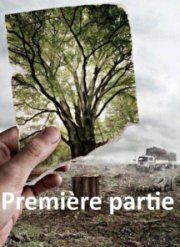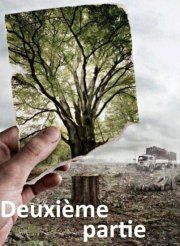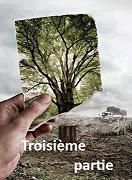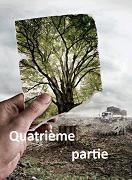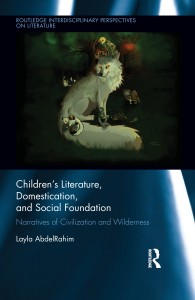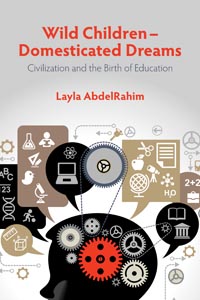Stories we tell ourselves work to justify the abuse we inflict on the planet.
Posted May 18, 2018 by Marc Bekoff, Animal Emotions on Psychology Today
“The stories we tell ourselves mostly work to justify and veil the abuse we inflict on the planet and our nonhuman siblings. Within a blink of an eye, our civilisation has brought life on earth to the brink of extinction.”
A few weeks ago I received and began reading through a most fascinating and wide-ranging book by Dr. Layla AbdelRahim called Children’s Literature, Domestication, and Social Foundation: Narratives of Civilization and Wilderness. I was familiar with another of her books titled Wild Children – Domesticated Dreams: Civilization and the Birth of Education, and after reading through her latest work I wanted to know more about it, so I asked if she could answer a few questions. Gladly she said she could. Our interview went as follows.
Why did you write Children’s Literature, Domestication, and Social Foundation?
This book is based on my doctoral dissertation in which I set out to understand the principles of life in wilderness and what made wild socio-economic relations different from the economic principles of civilisation. Since my previous work was rooted in anthropology, I was particularly interested in understanding how cultural choices – such as killing animals, domestication of human and nonhuman sexuality, and other forms of violence – become encoded and incorporated into our lives through personal and institutional practices and how we ensure the self-reproduction of these institutions.
My research revealed that because the economies of wilderness are governed by mutualistic, empathic relationships of exchange, individuals and groups (or species) continuously seek new ways of interacting. Here, empathy, or cueing in to how your community of life feels becomes an important guide by which members of the community gather knowledge and which guides their actions and reactions. This system requires presence and favours the constant evolution of diversity. Civilisation, in contrast, is rooted in the economy of domestication, in which everything and everyone is forced to conform to the will of human owner of resources. It is a socio-environmental and economic system rooted in monoculturalism, where empathy stands in the way. Thus, civilisation came up with a convoluted technological system that allowed people to alienate themselves from the pain they inflict on others. Language and symbolic culture thus enabled humans to institutionalise an ideology of violence and transmit it through abstract “knowledge” based on narratives that frame our and other beings’ experiences. Instead of basing our knowledge on direct experiences of how our own livelihoods impact others from whose suffering we benefit, we now rely on narratives to define for us which acts are to be understood as violent and thus to be defined as illegal or deviant and which violent acts are not even to be seen for what they are.
Children’s literature and culture are potent loci for this ideology, ensuring its uncompromising reification and unconscious propagation. The book shows how many of the fictional and scientific works that we assume to be “feminist,” “environmentalist,” or “anti-racist” build their narratives on this foundation of violence and thus inadvertently defeat their own purpose: the film “Up,” the popular books such as Anne of Greene Gables, Winnie-the-Pooh, The Giving Tree, Charlie and the Chocolate Factory, among others. However, and perhaps the most important objective of the book is to offer a way forward in envisaging new socio-economic relationships modeled on mutualistic paradigms in the wild and integrating them into our desires, narratives, institutions, and practices. I use Tove Jansson’s Moomin books to illustrate what possible ways forward may look like.
How does it follow up on your previous interests?
This book came out of years of personal observations, experiences, and my brief stint in journalism of war in Sudan, Eritrea, and Ethiopia, as well as my work with refugees of war and later anthropological research in Europe and North America. But most important, it comes out of my lifelong concern for the well being of nonhuman animals. My maternal grandparents had a small family farm south of Moscow surrounded by a forest. There were cows, goats, pigs, rabbits, chickens, geese, ducks, cats, and a dog. My grandparents loved and took great care of the animals. And yet, they killed and calmly ate the animals they gave names to and who I believed were part of the family. I would run to the forest and try to find a logic to this, but I could not. I tried to help the animals and save them from that fate, but even though at the time, I did not know what institutions were, I could see that there was a social wall, a consensus, that safeguarded these acts of violence.
At the age of three and a half, I resolved not to eat animals and to do everything to help bring an end to their suffering. Children’s literature was particularly striking to me in how it framed our relationships with our nonhuman siblings and each other. I experienced Brothers Grimm tales as ethnographic depictions of cannibalism and human predation: in the stories, animals and children were told they were loved and yet they were eaten without hesitation when hunger struck. In real life too, people I trusted and loved ate the animals who trusted and loved them. Thus, even though, at the time, I did not have the terminology, I nonetheless grasped the connection between our (civilised) economy, stories, and cultures of subsistence before I had language – or perhaps, because I did not have it. Over the years, this connection grew clearer as I delved into interdisciplinary research on violence, deviance, normalcy, legality, illness, and health. I thus started my studies in the “hard” sciences and later as I went into anthropology, sociology, and comparative literature.
What are your major messages in this wide-ranging and very novel book?
There are several messages I hope to get across. First, the stories we tell ourselves mostly work to justify and veil the abuse we inflict on the planet and our nonhuman siblings. Within a blink of an eye, our civilisation has brought life on earth to the brink of extinction. I urge people to rethink the ways in which each of us, wittingly or not, perpetuates this tragedy, both on personal and institutional levels; the ways in which each of us plays our role of the “Little Eichmann” in the holocaust against life. Because language constitutes the main technology for the transmission of socio-economic choices, people need to examine the ways in which language inhabits and domesticates us prompting us to contribute to an economy based on predation. In other words, we must connect words with deeds and not separate them as we currently do.
My book offers an analysis of how narratives of civilisation centre the interests of the “owners” and the “agents”, i.e. of those who are economically and politically dominant and silences the voices of the suffering to continue their exploitation. In this manner, the public discourse frames the perspective of the predator in terms of truth and the voices that challenge the naturalness of predation as lie. My hope is that this book will provide a new lens through which to understand our anthropology – or self-knowledge as predators – and to rewild ourselves, starting with our narratives and socio-environmental economy and ending with our language and dreams.
Who is your major audience?
The book is intended for a varied lay and professional audience. To make my work accessible to non-academics, I explain the “difficult” terms. The explanatory notes and bibliography offer further suggestions for research. The lay audience can be activists, parents, or simply people concerned with aligning their own personal and professional lives to respond adequately to the demands of the current environmental and political challenges.
The book should be of equal interest to economists, environmentalists, animal well-being activists, natural and social scientists, humanists, educators, academics and non-academics alike.
What are some of your current and future projects?
I am currently working on my next book project, in which I examine the links between the narratives in evolutionary theory, education, economics, and the domestication of human beings. I am comparing Western, Russian, and Arabic conceptions of evolution.
“If we are to halt the impending anthropogenic catastrophe, we need to identify the ways in which we have disrupted the system of life on this planet.”?
Is there anything more you’d like to tell readers?
If we are to halt the impending anthropogenic catastrophe, we need to identify the ways in which we have disrupted the system of life on this planet. To do that, we need to do three things: get outside our narcissistic narratives; cede our self-designated place as top predator; and re-integrate ourselves into wild economies, in which we cherish and respect the self-realisation and well being of each creature regardless of species or whether they hold any value for us. This is what I mean by rewilding.
Thank you, Layla for a most interesting and informative interview. You helped clarify for me just what your book is all about and I hope it will receive a broad and cross-cultural audience. I hadn’t fully appreciated the power of children’s literature and now I do. It’s essential that others appreciate and understand it as well.








